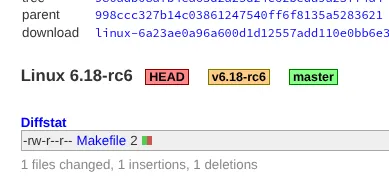Linus Torvalds is out today with the eighth weekly test release of the Linux 6.18 kernel in working toward the stable release at the end of the month.
Linux 6.18-rc6 is out today with another week’s worth of random fixes and improvements. It…

Linus Torvalds is out today with the eighth weekly test release of the Linux 6.18 kernel in working toward the stable release at the end of the month.
Linux 6.18-rc6 is out today with another week’s worth of random fixes and improvements. It…